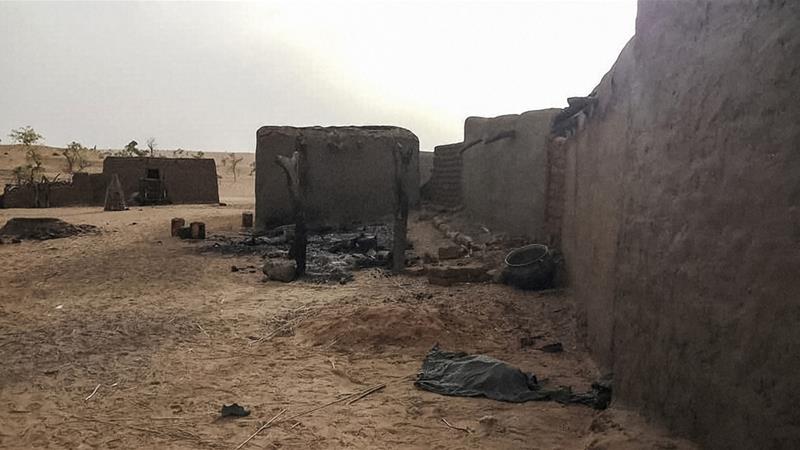Dozens of people are reported killed after a new attack on two villages in central Mali, a part of the country experiencing a dire security situation amid an increase in tit-for-tat ethnic violence.
A local mayor told Reuters News Agency on Tuesday that unidentified gunmen on motorbikes attacked the villages of Yoro and Gangafani 2 the previous evening, killing at least 41 civilians.
The victims of the raids were mostly ethnic Dogons, according to Issiaka Ganame, the mayor of Yoro, where 24 people were killed. Another 17 died in Gangafani 2.
READ MORE-Mali: Fighting ongoing between herders and farmers
“About 100 unidentified armed men circulating on motos all of a sudden invaded Yoro and fired on the population,” Ganame said.
“Then they descended on the village of Gangafani 2, which is about 15km away.”
Separately, local judicial official Boubacar Sidiki Samake told the AFP news agency that Monday’s attacks in the two villages near the border with Burkina Faso had left “14 people dead according to a provisional toll”.
A Malian military source said as many as 40 people may have been killed.
No other information was immediately available.
|
|
The attack on the two villages compounds a desperate security situation in central Mali, where ethnic militias regularly slaughter civilians from rival groups.
The tit-for-tat violence in recent months has largely pitted Dogon hunters against Fulani herders. Attackers believed to be Fulani raided a Dogon village last week, killing at least 35 people.
In March, suspected Dogon militiamen killed more than 150 Fulani in two villages in central Mali, one of the worst acts of bloodshed in the country’s recent history.
At least 488 Fulani civilians died in attacks carried out in the central regions of Mopti and Segou between January 1, 2018, and May 16, 2019, according to the United Nations mission in Mali (MINUSMA). In the same period, armed Fulanis had “caused 63 deaths” among civilians in the Mopti region.
President Ibrahim Boubacar Keita’s government has vowed to disarm the militias but has struggled to do so.
READ MORE-Mali declares 3 days of national mourning for massacre victims
On Tuesday, two labour unions representing civil servants called on state administrators in the Mopti region, where most of the attacks have occurred, to leave their posts and decamp to the regional capital due to death threats.
“President Keita said he was going to disarm all the militias. We take note and await the disarmament of the militias and implementation of protection measures,” said Ousmane Christian Diarra, secretary-general of the National Syndicate of Civil Administrators.
Central Mali has in the past few years been overrun by fighters with links to al-Qaeda.
Violence by fighter groups has worsened almost every year since it first started in Mali in 2012 when rebel fighters and allied Tuareg rebels took over the north and advanced towards the capital, Bamako, until a French-led intervention pushed them back the following year.
Groups linked to al-Qaeda and the Islamic State of Iraq and the Levant (ISIL or ISIS) used central and northern Mali as a launch pad for growing numbers of attacks across the Sahel region and stoke tensions among different communities, despite the presence of thousands of French and regional troops, as well as UN peacekeepers.

INSIDE STORY-What’s behind the ethnic violence in Mali?






 WhatsApp us
WhatsApp us 

